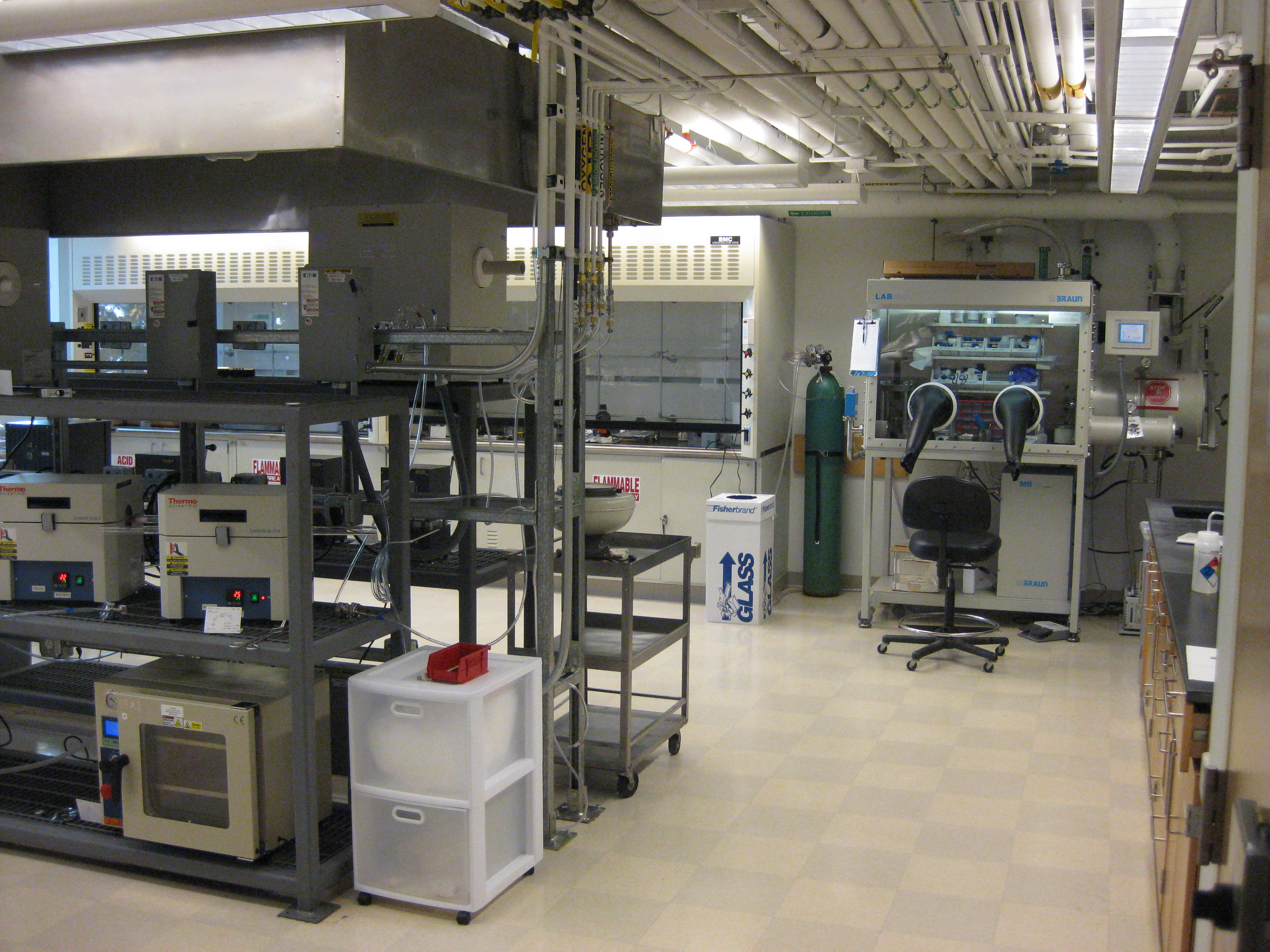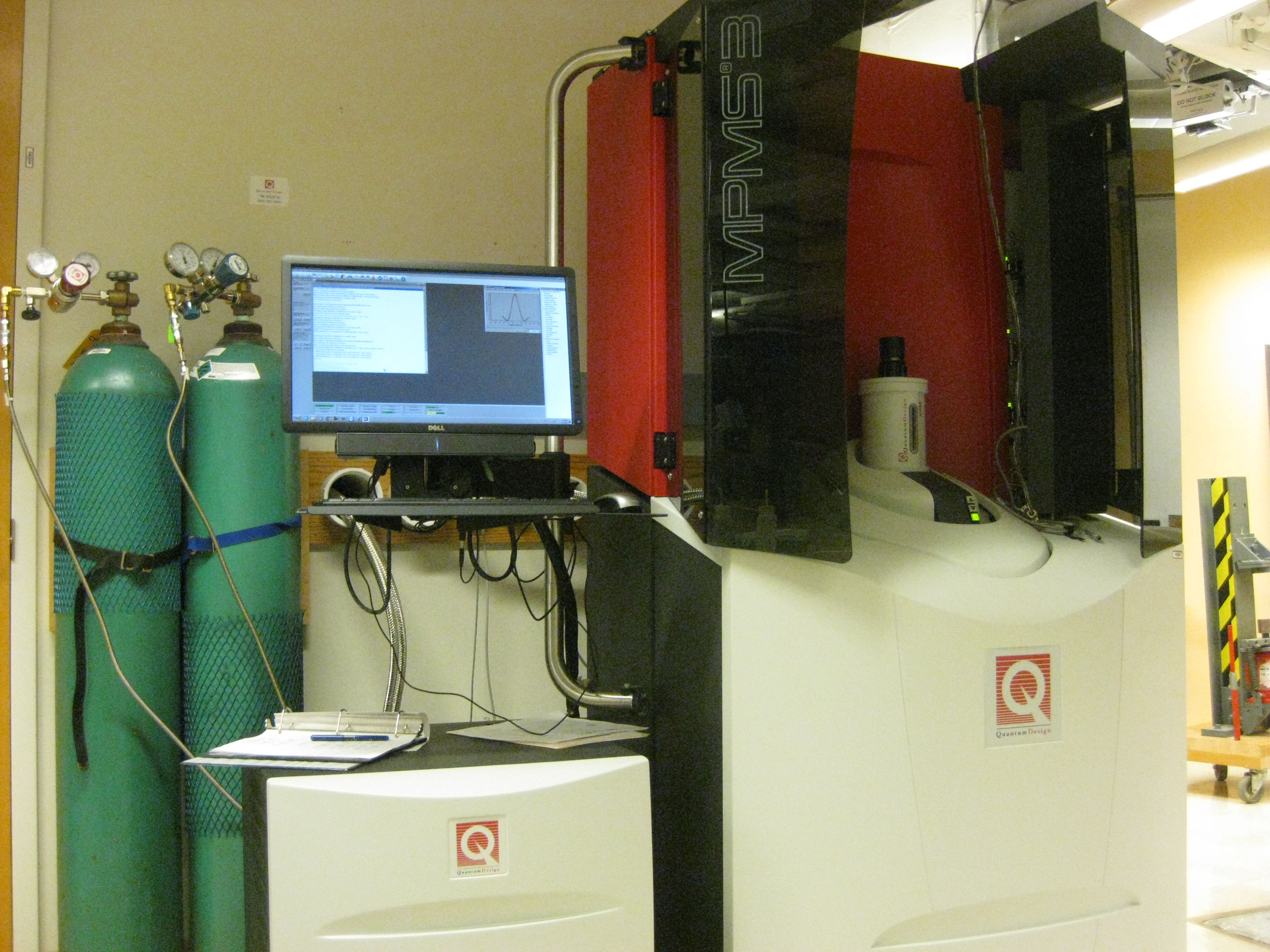Tafti Lab is an integrated research program in condensed matter physics, solid state chemistry, and materials science. The various aspects of materials discoveries require a diverse set of laboratories and instruments. Beyond the local laboratories at Boston College, the large-scale experiments such as synchrotron radiation and high field measurements are performed at various national laboratories.
Materials Synthesis Lab (Higgins-145)
Tel: (617) 552-8147
Room 145 contains all the synthesis facilities including chemical storage, an argon glovebox, a nitrogen glovebox, muffle and tube furnaces, a vacuum furnace, arc melting system, gas control systems, fume hoods, optical microscopes, etc. This is the main workplace for our team where the magical discovery of new materials happens. All computers in this room are connected to BC cluster for materials computations using the full potential linearized augmented plane wave (LAPW) method.
X-ray Crystallography Lab (Higgins-157b)
Tel: (617) 552-2326
Our powder diffractometer, located in Room 157b, is a Bruker D8 ECO instrument with LYNXEYE XE detector. X-rays are produced by a 40 keV copper tube which is water cooled with an internal chiller. The state of the art detector records high-resolution and high counts diffraction data suitable for the careful structural analyses of complex solids. Complementary to the in-house diffractometer, we perform synchrotron and neutron diffraction experiments at various national laboratories such as the Powgen facility at Oakridge.
Physical Properties Measurement Lab (Higgins-157a)
Tel: (617) 552-2706
To measure the resistivity, Hall effect, heat capacity, and thermal conductivity of materials, we use a Quantum Design DYNACOOL system. The cryostat is capable of tuning the temperature between 2 and 400 K, and tuning the magnetic field between -9 and +9 T regularly with a closed cycle compressor which eliminates the use of liquid helium. The system is equipped with a high-resolution rotator to measure various transport coefficients as a function of field angle.
Magnetic Properties Measurement Lab (Higgins-110a)
Tel: (617) 552-8479
To measure the magnetic properties of materials, we use a Quantum Design MPMS3 located in room 110a. The cryostat is capable of tuning the temperature between 2 and 400 K, and tuning the magnetic field between -7 and +7 T to measure both DC and AC susceptibility. Our system is equipped with a Vibrating Sample Magnetometer (VSM) coupled with the SQUID system for a fast data acquisition with high resolution and low background. This system is also equipped with a rotator to measure magnetic properties as a function of field angle.
Electron Microscopy Lab (Higgins-110b)
Tel: (617) 552-8479
We use a JEOL field-emission scanning electron microscope (SEM) with nanometer resolution, 20 keV electron beam energy, and 12 μA beam current. Energy dispersive x-ray spectroscopy (EDX) is regularly performed with an EDAX detector installed on our SEM. We have fruitful collaborations with the Harvard Center for Nanoscale Systems (CNS) for various imaging and spectroscopic techniques including SEM, TEM, and XPS. We also have ongoing collaborations with materials scientists at Argonne national laboratory for measurements of the X-ray absorption near edge structure (XANES) and the edge X-ray absorption fine structure (EXAFS).

